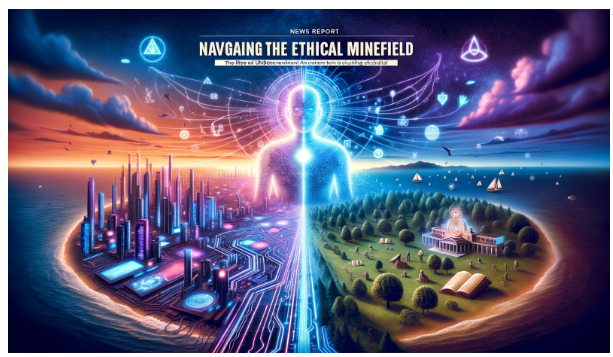Navigating the Ethical Minefield: The Rise of Undress AI
The advent of artificial intelligence (AI) has ushered in a new era of innovation and convenience, transforming countless aspects of our daily lives and work. However, the emergence of Undress AI, a deeply concerning application of AI technology, poses significant ethical and privacy challenges. This phenomenon, where AI is used to create non-consensual intimate imagery, has sparked a global debate on the need for ethical AI use and robust regulatory frameworks.
What is Undress AI and Why is it a Growing Concern?
In the digital age, the rise of artificial intelligence (AI) has brought about many innovations and conveniences. However, a disturbing trend has emerged, casting a shadow over the advancements: the proliferation of Undress AI. This term refers to the unauthorized use of AI to digitally alter photos and videos to create nude images of individuals without their consent. Recent studies, including one by the social media analytics firm Graphika, have highlighted an alarming increase in such activities, with platforms offering Undress AI services attracting over 24 million unique visits in a single month.
How Do These AI Platforms Operate?
These platforms exploit advanced Nudify AI tools to manipulate existing images, removing clothing and creating realistic nude photos or videos. The process involves sophisticated image processing and deep learning techniques, which have become more accessible thanks to the availability of open-source AI models. This ease of access has significantly reduced the cost and time required to generate these images, contributing to the rapid growth of such services.
Why is Undress AI a Significant Issue?
The creation and distribution of Undress AI pose severe ethical and privacy concerns. Victims, predominantly women, find themselves exposed to unwarranted public scrutiny, harassment, and emotional distress. Moreover, the spread of such imagery can lead to severe psychological impacts, damage to reputations, and even professional repercussions. The issue is further compounded when minors are targeted, raising legal and moral alarms.
When Did Undress AI Start Gaining Attention?
The issue of Undress AI has been around for several years but gained significant attention recently due to the explosive growth of AI capabilities and the ease with which these images can now be created and disseminated. The sharp increase in the number of websites and apps dedicated to this purpose, as evidenced by recent studies, indicates a growing market for such illicit content, fueled by advancements in AI technology.
Where is the Legal Stand on Undress AI?
The legal framework surrounding Undress AI and digital privacy is complex and varies by jurisdiction. While some countries have laws against the creation and distribution of non-consensual pornography, the specific challenge posed by AI-generated Nudify images often falls into a legal grey area. The lack of comprehensive federal laws specifically addressing the creation of deepfake pornography exacerbates the issue, highlighting the urgent need for updated regulations that can keep pace with technological advancements.
What Can Be Done to Combat Undress AI?
Addressing the challenge of Undress AI requires a multi-faceted approach. This includes the development of more robust legal frameworks, technological solutions to detect and block the creation and distribution of such content, and public awareness campaigns to educate people about the dangers and implications of Undress AI. Collaboration between governments, tech companies, and civil society is crucial to develop effective strategies to protect individuals’ privacy and dignity in the digital realm.
Conclusion:
The issue of Undress AI underscores a critical juncture in our relationship with technology, highlighting the urgent need for a balanced approach that harnesses the benefits of AI while safeguarding individual rights and dignity. As we venture further into the digital age, it is imperative that we establish strong ethical guidelines and legal protections to prevent the misuse of AI technologies. Only through collective action, awareness, and the implementation of effective measures can we ensure that AI serves the greater good, respecting the boundaries of privacy and consent.





